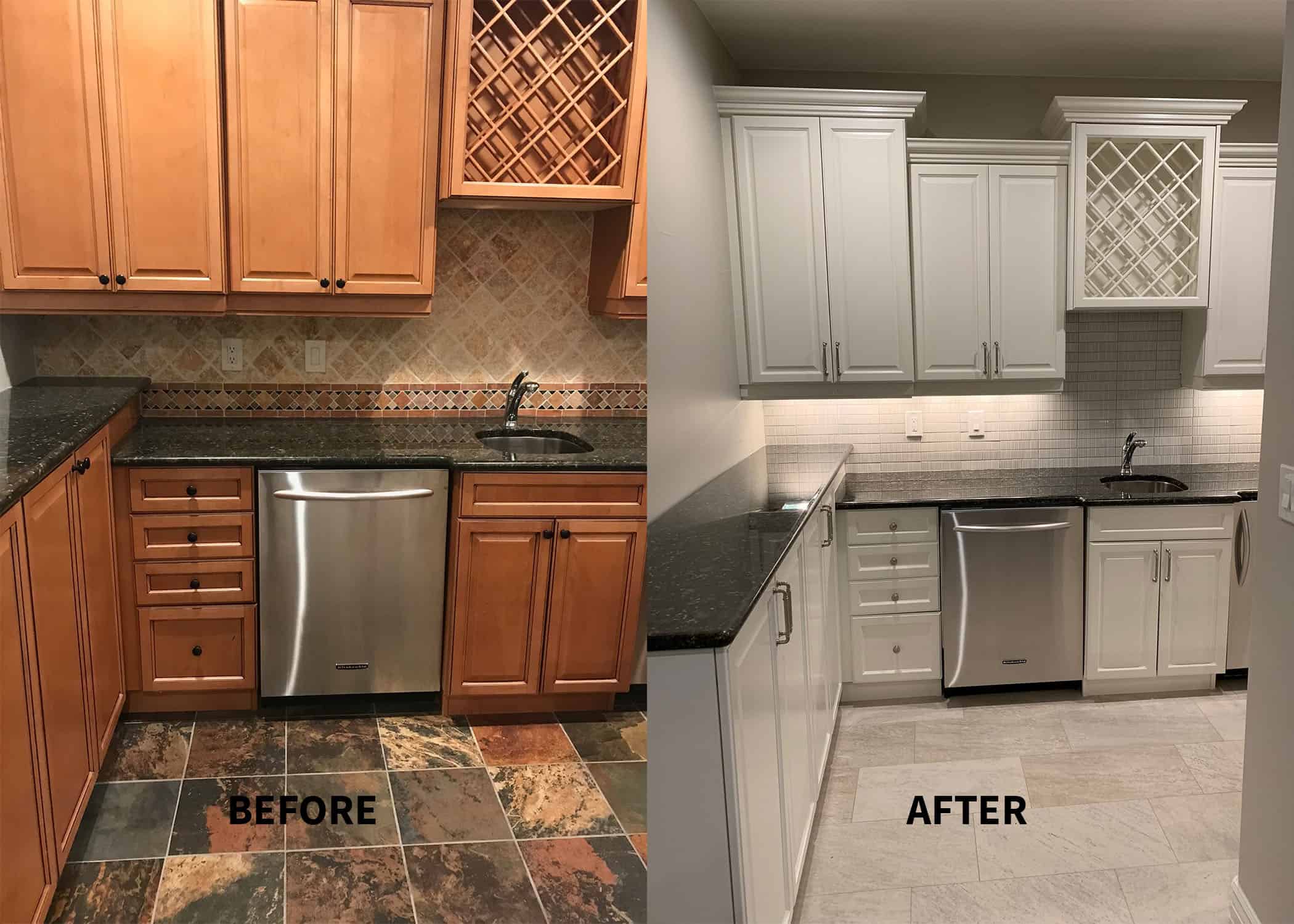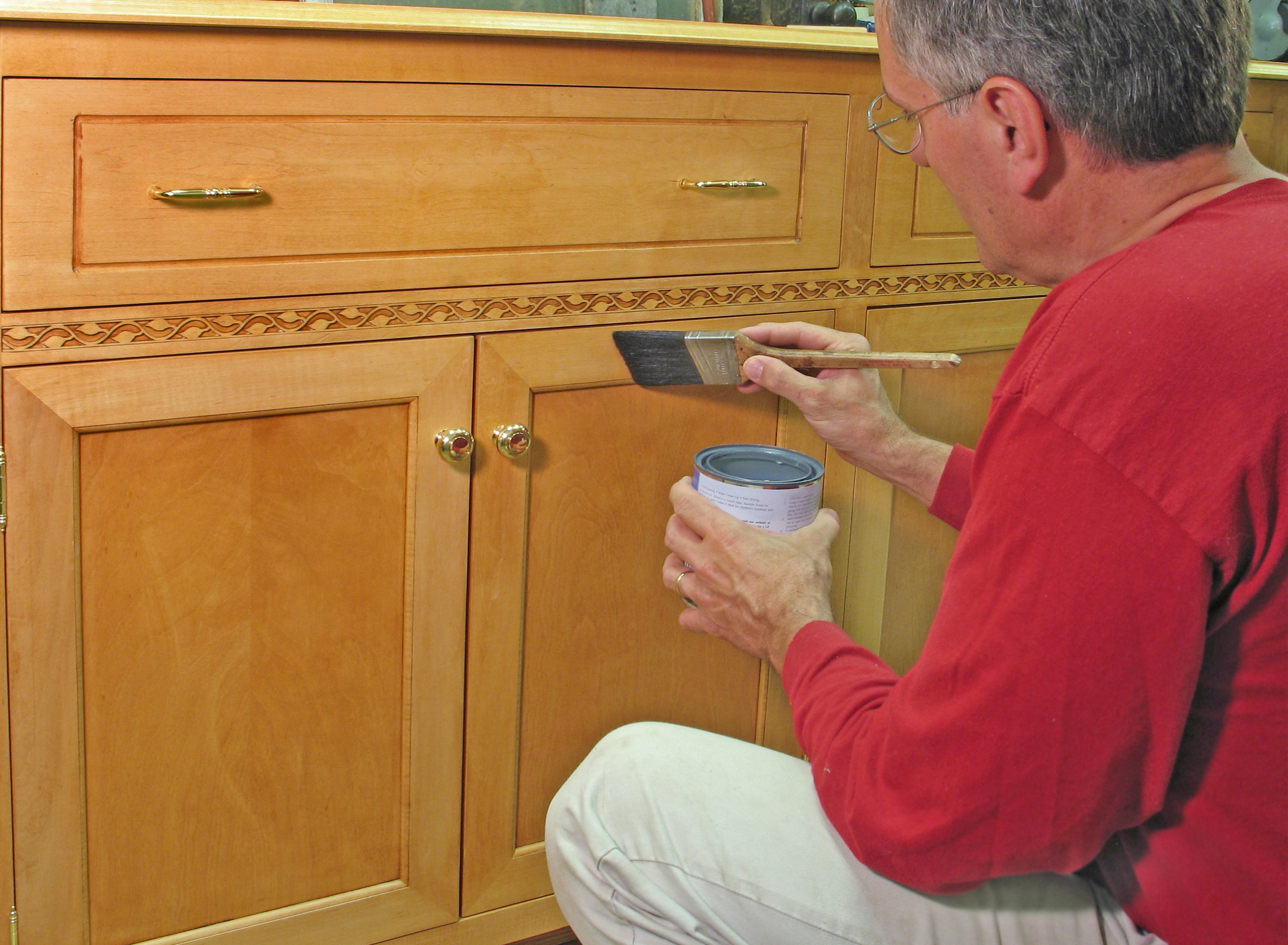Suitability of Exterior Paint for Kitchen Cabinets

The allure of exterior paint for kitchen cabinets—its robust durability and vibrant color selection—is undeniable. However, using a product designed for weathering the elements on surfaces subjected to daily food preparation raises important considerations. This exploration delves into the suitability of exterior paint for this application, comparing its properties to those of interior cabinet paints and examining the potential long-term implications.
Exterior vs. Interior Paint Properties
Exterior and interior paints differ significantly in their formulation to meet distinct environmental challenges. Exterior paints, formulated to withstand harsh weather conditions, typically possess a higher concentration of binders and pigments, resulting in increased durability and resistance to fading. They often include mildew inhibitors and are designed to be more flexible, accommodating expansion and contraction due to temperature fluctuations. Interior paints, on the other hand, prioritize ease of application, lower odor, and a smoother finish. The trade-off is often a less robust finish that may be more susceptible to chipping or scratching. The difference in flexibility is crucial; exterior paint’s greater flexibility can be advantageous in preventing cracking on cabinet doors, but its greater thickness may also result in a less smooth final finish compared to interior paints designed specifically for cabinetry.
Long-Term Effects of Exterior Paint on Kitchen Cabinets
The kitchen environment presents unique challenges. High humidity from cooking and cleaning can lead to mold growth, a problem that exterior paints, while often mildew-resistant, may not fully prevent if not properly applied and primed. Temperature fluctuations can also cause the paint to expand and contract, potentially leading to cracking or peeling over time, especially if the cabinet material itself isn’t properly prepared. Frequent cleaning with harsh detergents and abrasive cleaners, common in kitchens, can wear down even the most durable exterior paint faster than it would wear down an interior cabinet paint designed for this purpose. Imagine a scenario where a highly durable, but inflexible, exterior paint is applied to cabinets in a kitchen experiencing significant temperature swings. The paint’s inability to accommodate the expansion and contraction could result in premature cracking and peeling, compromising the aesthetic appeal and protective function of the paint job.
Toxicity and Off-Gassing of Exterior Paints, Can you use exterior paint on kitchen cabinets
Exterior paints generally contain higher levels of volatile organic compounds (VOCs) than interior paints. VOCs are chemicals that evaporate from the paint during and after application, releasing potentially harmful fumes into the air. While regulations limit VOC levels in both exterior and interior paints, exterior paints often still have higher concentrations. In a confined space like a kitchen, these fumes could pose a health risk, particularly for sensitive individuals. Furthermore, the possibility of paint chipping or flaking into food increases the risk of accidental ingestion of potentially toxic substances. A scenario to consider is a family with young children or individuals with respiratory sensitivities using a high-VOC exterior paint in their kitchen. The prolonged exposure to off-gassing could exacerbate existing respiratory issues or cause new ones, creating an unhealthy living environment.
Comparison of Exterior and Interior Cabinet Paints
| Feature | Exterior Paint | Interior Cabinet Paint |
|---|---|---|
| Durability | High; resistant to weathering | Moderate; resistant to typical wear and tear |
| Cleanability | Good; withstands harsh cleaning | Good; designed for frequent cleaning |
| VOCs | Generally higher | Generally lower |
| Cost | May be comparable or slightly higher | Often more affordable |
Alternative Paint Options for Kitchen Cabinets

Choosing the right paint for your kitchen cabinets is a crucial decision impacting both aesthetics and longevity. While exterior paint might seem tempting due to its durability, it’s often unsuitable for the unique demands of a kitchen environment. Interior paints, however, offer a diverse range of options specifically formulated for indoor use, providing superior performance and a healthier living space. This section explores suitable interior paint choices, their characteristics, and application techniques.
Interior paints designed for cabinets provide excellent adhesion, durability, and a wide variety of finishes to suit any style. The selection process should consider factors like the level of sheen desired, ease of cleaning, and the overall aesthetic of the kitchen. Remember, proper preparation is key to a successful and long-lasting paint job, regardless of the type of paint selected.
Interior Paint Options for Kitchen Cabinets
The selection of interior paint for kitchen cabinets hinges on the desired finish. Each finish type offers a unique balance of durability, cleanability, and aesthetic appeal. Consider these options carefully to find the perfect match for your kitchen’s style and your personal preferences.
- Matte/Flat Finish: This finish offers excellent hiding power, minimizing imperfections on the cabinet surfaces. However, it’s less durable and more challenging to clean than other finishes. It provides a sophisticated, understated look, ideal for a rustic or traditional kitchen style. Imagine a warm, creamy white matte finish on shaker-style cabinets, creating a calming and inviting atmosphere.
- Eggshell Finish: Offering a slightly more durable and washable surface than matte, eggshell provides a soft sheen with good hiding power. It’s a popular choice for its balance of durability and subtle elegance. Picture a sophisticated gray eggshell finish on sleek, modern cabinets, providing a clean and contemporary feel.
- Semi-Gloss Finish: This finish is highly durable and easily cleaned, making it ideal for high-traffic areas like kitchens. Its slight sheen adds a touch of elegance and reflects light, making the cabinets appear brighter. Visualize a bright white semi-gloss finish on traditional raised-panel cabinets, reflecting light and creating a sense of spaciousness.
- High-Gloss Finish: Offering the highest level of sheen and durability, high-gloss paint is incredibly easy to clean and maintain. However, it can highlight imperfections on the cabinet surfaces. This bold finish is perfect for a modern or contemporary kitchen design, adding a dramatic and luxurious touch. Envision deep, rich jewel tones in a high-gloss finish on minimalist slab-door cabinets, adding a touch of glamour and sophistication.
Successful Cabinet Painting Projects with Interior Paint
Many successful kitchen cabinet painting projects showcase the transformative power of interior paints. A recent project involved transforming outdated oak cabinets with a soft, creamy white semi-gloss paint. The result was a bright, updated kitchen that felt significantly larger and more modern. The semi-gloss finish proved easy to clean, maintaining its pristine look despite daily use. Another project utilized a deep navy blue matte finish on shaker-style cabinets, creating a dramatic and sophisticated look in a smaller kitchen. The matte finish successfully hid minor imperfections, while the dark color added depth and character to the space.
Benefits and Drawbacks of Interior Paint Finishes
The choice of paint finish involves a trade-off between durability, cleanability, and aesthetic appeal. Matte and eggshell finishes offer superior hiding power and a more subdued look, but are less durable and harder to clean. Semi-gloss and high-gloss finishes provide exceptional durability and cleanability but may highlight imperfections. The optimal choice depends on individual priorities and the overall style of the kitchen.
Preparation Steps for Painting Kitchen Cabinets with Interior Paint
Thorough preparation is paramount for a successful cabinet painting project. Overlooking these steps can lead to a less durable and aesthetically pleasing finish.
- Clean the cabinets thoroughly: Remove grease and grime using a degreaser and a soft cloth or sponge.
- Sand the cabinet surfaces: Lightly sand to create a smooth surface and improve paint adhesion. Use fine-grit sandpaper (180-220 grit).
- Fill any holes or imperfections: Use wood filler to repair any damage and ensure a smooth surface.
- Prime the cabinets: Apply a high-quality primer to ensure proper adhesion and even color coverage. A bonding primer is particularly useful for previously painted cabinets.
- Apply paint in thin, even coats: Allow each coat to dry completely before applying the next. Multiple thin coats are better than one thick coat.
- Apply a sealant (optional): A sealant can enhance durability and water resistance.
Addressing Concerns and Misconceptions: Can You Use Exterior Paint On Kitchen Cabinets

The whispers started subtly, a rustling in the pantry, a faint scent of turpentine clinging to the air. Old Mrs. Gable, known for her uncanny ability to predict kitchen catastrophes, had warned against it – using exterior paint on those prized cherry cabinets. But the allure of that vibrant, weather-resistant hue was too strong to resist. Now, the unsettling truth is beginning to reveal itself.
Using exterior paint on kitchen cabinets, while tempting due to its advertised durability, often leads to unforeseen consequences. It’s not simply a matter of aesthetics; it’s about the long-term health and functionality of your kitchen. The misconception that “tougher is better” often overshadows the crucial differences in paint formulations designed for vastly different environments. Exterior paints, formulated to withstand harsh weather conditions, contain ingredients that are unsuitable for the indoor environment.
Exterior Paint’s Inappropriate Properties for Kitchen Cabinets
Exterior paints are not designed for the consistent temperature and humidity fluctuations of a kitchen. This can lead to premature chipping and cracking, requiring costly repairs and repainting.
The volatile organic compounds (VOCs) present in many exterior paints, designed to resist UV degradation, can off-gas within the enclosed space of a kitchen, potentially causing respiratory irritation and other health issues. This is especially concerning for those with allergies or sensitivities.
Unlike interior paints, exterior paints lack the flexibility to cope with the subtle expansion and contraction of wood caused by changes in humidity. This rigidity increases the risk of cracking and peeling.
The durability of exterior paints, while beneficial outdoors, often translates to a less breathable finish indoors. This can trap moisture within the wood, leading to mold and mildew growth.
Common Misconceptions Corrected
The notion that “all paints are created equal” is a dangerous one. Many believe that the increased durability of exterior paint automatically translates to superior performance in a kitchen. This is false. The extreme conditions exterior paint is designed for (sun exposure, rain, extreme temperatures) are not replicated indoors. In fact, these very properties can be detrimental in a kitchen environment. Another common misconception is that a single coat of high-quality exterior paint will suffice. This ignores the need for proper surface preparation and the multiple coats often necessary for a smooth, durable finish. Finally, the belief that a strong odor after painting simply means a “stronger” paint is misleading; a strong odor often indicates a high VOC content, which is unhealthy for kitchen occupants.
Effective Communication of Paint Risks and Benefits
When choosing paint for kitchen cabinets, consider the long-term consequences. Interior paints, specifically designed for indoor use, offer a balance of durability, breathability, and low VOC content. While they may not be as resistant to scratches as some exterior paints, they offer a safer and more suitable environment for a kitchen. The initial cost difference is often insignificant compared to the potential costs of repairing damage caused by inappropriate paint choices. A clear, concise explanation of the specific properties of interior and exterior paints, highlighting their intended use and potential risks, is crucial in making an informed decision. Remember, the health and safety of your family should always be the priority.
